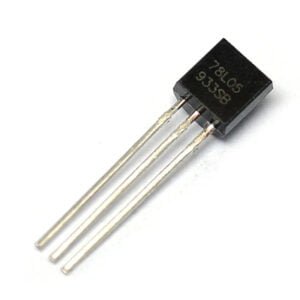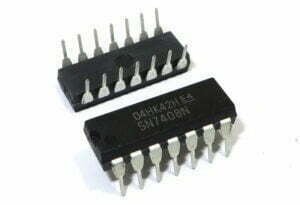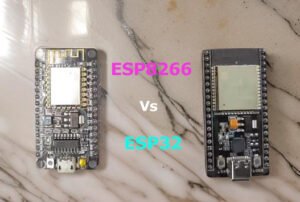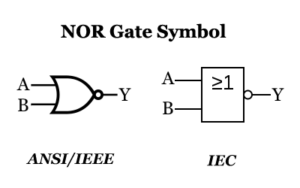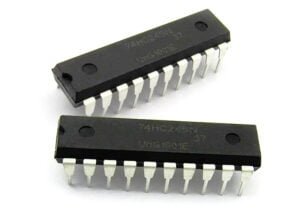Modern computing systems rely on both microcontrollers (MCUs) and microprocessors (MPUs) for different purposes. Although they serve as the brains of various electronic devices, their architecture and use cases vary significantly. This guide breaks down their differences, highlights practical applications, and offers insights into choosing the right solution.
What is a Microcontroller (MCU)?
A microcontroller is a compact, integrated circuit designed to perform specific control-oriented tasks. It comes with built-in components, such as a CPU, memory, input/output (I/O) interfaces, and timers, making it an all-in-one solution. MCUs are widely used in embedded systems where simplicity, low power consumption, and cost efficiency are critical.
Key Components of a Microcontroller:
- CPU – Processes instructions to manage system operations.
- Memory – Contains RAM for temporary data and ROM/Flash for program storage.
- I/O Interfaces – Interact with external sensors and devices.
- Timers and Counters – Manage time-based events precisely.
- Communication Protocols – Enable data exchange (SPI, I²C, UART).
MCUs power appliances like microwaves, wearables, and home automation systems, delivering reliable performance with minimal energy consumption.
Applications of Microcontrollers
- Wearable Technology: Fitness trackers monitor movement and health metrics using MCUs.
- Home Automation: Smart devices such as thermostats or lighting systems respond to environmental changes.
- Automotive Systems: Engine control units (ECUs) and parking sensors depend on MCUs for real-time processing.
Since microcontrollers are pre-configured to execute dedicated tasks, they work best in single-purpose devices where power efficiency is key.
What is a Microprocessor (MPU)?
A microprocessor is primarily a central processing unit (CPU) without built-in peripherals. Unlike microcontrollers, MPUs require external components such as RAM, storage, and input/output interfaces to function. Designed for general-purpose computing, they can handle heavy computational workloads across multiple applications.
Features of Microprocessors:
- High Performance: Capable of running operating systems (e.g., Windows, Linux).
- Scalability: Suitable for systems requiring external memory and peripherals.
- Multitasking: Supports multiple applications and background processes efficiently.
MPUs are used in laptops, smartphones, gaming consoles, and cloud computing systems, where high-speed processing and multitasking are essential.
Microcontroller vs. Microprocessor: Key Differences at a Glance
| Feature | Microcontroller (MCU) | Microprocessor (MPU) |
|---|---|---|
| Design | All-in-one chip | CPU only, needs external components |
| Use Case | Embedded systems | Computers, servers, mobile devices |
| Memory | Integrated RAM/ROM | Requires external memory |
| Power Consumption | Low | Moderate to high |
| Cost | Cheaper | More expensive due to added performance |
Choosing Between a Microcontroller and a Microprocessor
The choice between an MCU and an MPU depends on the nature of the application:
- Microcontroller: Ideal for tasks that require control and monitoring within limited power budgets, such as smart home devices or medical instruments.
- Microprocessor: Best suited for complex, multitasking systems, like computers or smartphones, where performance and flexibility are prioritized over power efficiency.
Real-Time Operating Systems (RTOS) and Emerging Trends
Microcontrollers have become increasingly important in applications requiring real-time responses. With RTOS, MCUs can react within microseconds, making them suitable for safety-critical environments like automotive braking systems or industrial automation.
Meanwhile, microprocessors are evolving to handle artificial intelligence (AI) workloads. Today’s smartphones use MPUs for tasks like voice recognition and facial authentication, showcasing the growing importance of edge computing.
Power Efficiency: A Crucial Factor
Microcontrollers are optimized for low energy consumption, making them perfect for IoT sensors and battery-powered devices that need to run for extended periods. For example, environmental monitors deployed in remote locations rely on MCUs to function for months without maintenance.
In contrast, microprocessors are used in applications with continuous power sources, such as desktops, servers, or cloud-based systems, where performance is more critical than power savings.
Final Thoughts
The debate between microcontrollers and microprocessors is not about which is superior but about selecting the right component for the job. Microcontrollers excel in specific, real-time control tasks that require energy efficiency, while microprocessors shine in general-purpose, high-performance computing environments. Understanding their differences helps designers and engineers build solutions that effectively balance power, performance, and cost.

